Introduction to Matomo Analytics – basics of Matomo in 10 minutes

The Matomo (previously known as Piwik) open-source web analytics software is becoming more and more popular.
Because Matomo is installed on the user’s server and data ownership remains with the user, it is the best option for e.g. the public sector, health care or law firms needing an analytics solution.
Matomo – open-source web analytics
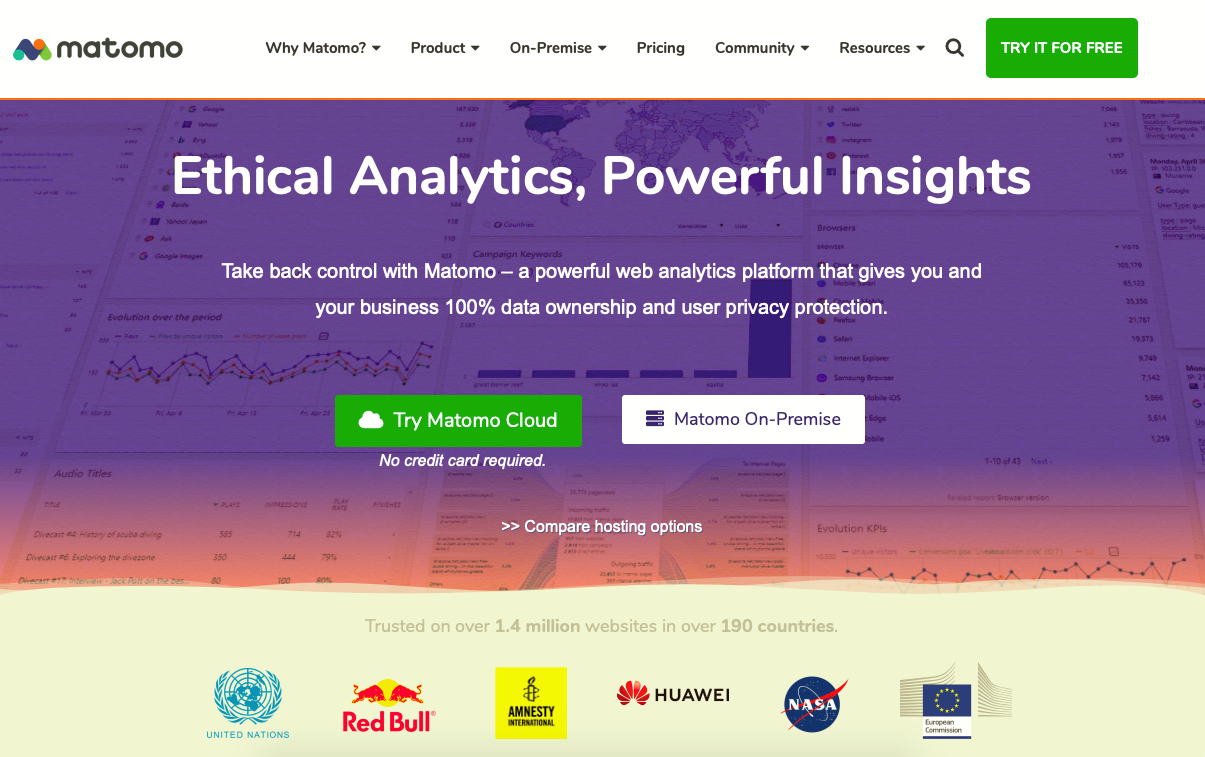
Matomo is an open-source software solution. This means that you can download the software, explore its functions, adapt it as you like, and use it for free.
You can also install the analytics software on your own server. The server can be physically on your company’s premises, or you can use cloud services provided for instance by Amazon, Google or Microsoft. In this case, all visitor data collected through analytics will only be saved in your database.
A cloud service, such as the one provided by Innocraft, is the easiest way to begin using Matomo: visitor data is saved in the service provider’s cloud service, not on your server, but your company still owns any data collected.
How to implement Matomo
Regardless of whether you use your own server or a cloud service, the analytics software is installed on your website and deployment is the same as for applications like Google Analytics.
Matomo’s tracking code, the ‘tag’, is added to the website’s template and performed every time a page is visited. The tag is a JavaScript code which sends tracking data to Matomo’s database (either your own server or a cloud service).
You can install Matomo directly on the website, or use a separate Tag Management application. Matomo also works perfectly when installed through Google Tag Manager. In addition, Piwik Pro includes a special Tag Management service for users who, for some reason, want to stay away from Google services once and for all.
You can familiarise yourself with a demo account without installing Matomo by using the free demo account.
Matomo and Google Analytics’ logic compared
It is easy to start using Matomo if you have already used, say, Google Analytics or Snoobi.
Most of Google Analytics’ and Snoobi’s features can be found in Matomo. However, as the systems use different terminology, it is advisable be aware of the main differences.
Matomo applies old Google Analytics terminology to users. Google’s ‘users’ are Matomo’s ‘visitors’ and ‘sessions’ are ‘visits’. Traffic sources can be found under the Referers menu. Remember these, and you will be able to use the key reports.
User interface
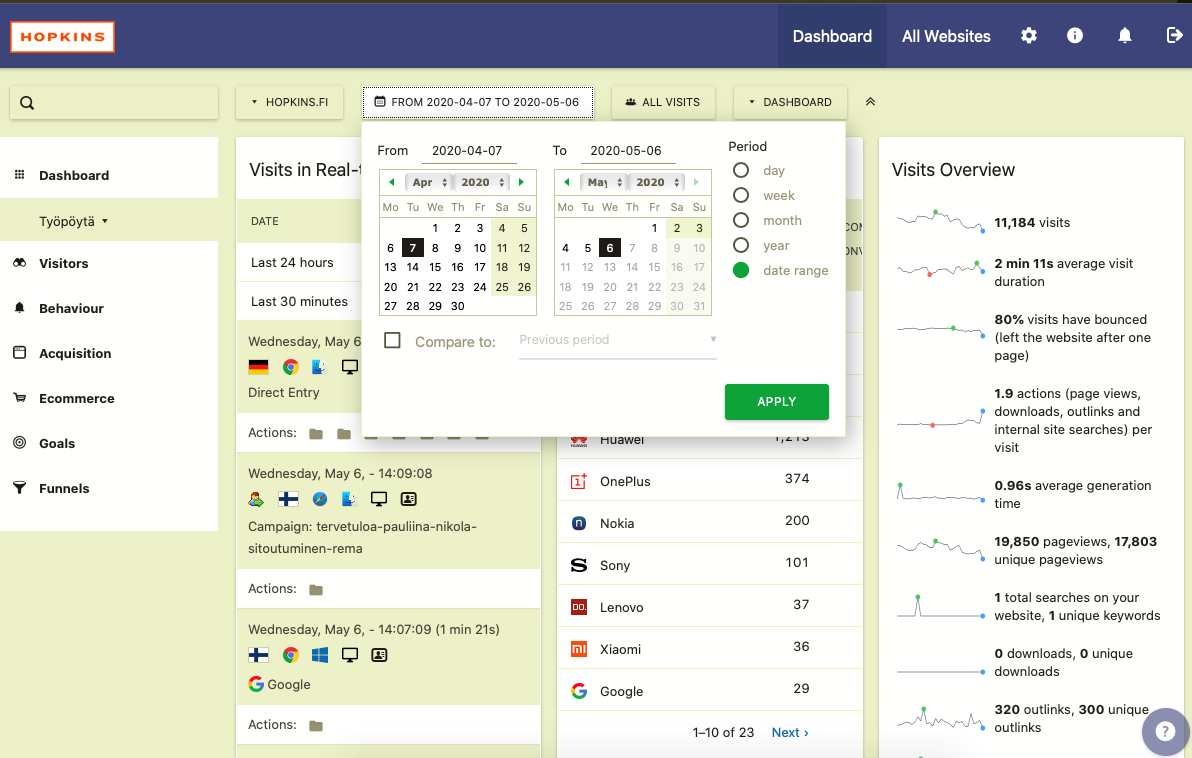
The logic of the user interface is close to that of Google Analytics. In Matomo, the main menu is situated to the left, just as in Google Analytics. The various reports can be found through the main menu in Matomo.
The drop-down menu in the top navigation pane includes the various sites, report time selection, the segment viewed and addition of new elements to the report.
It is easy to familiarise yourself with Matomo: just review the reports in the left-hand menu for an instant insight into Matomo’s features.
Visitors
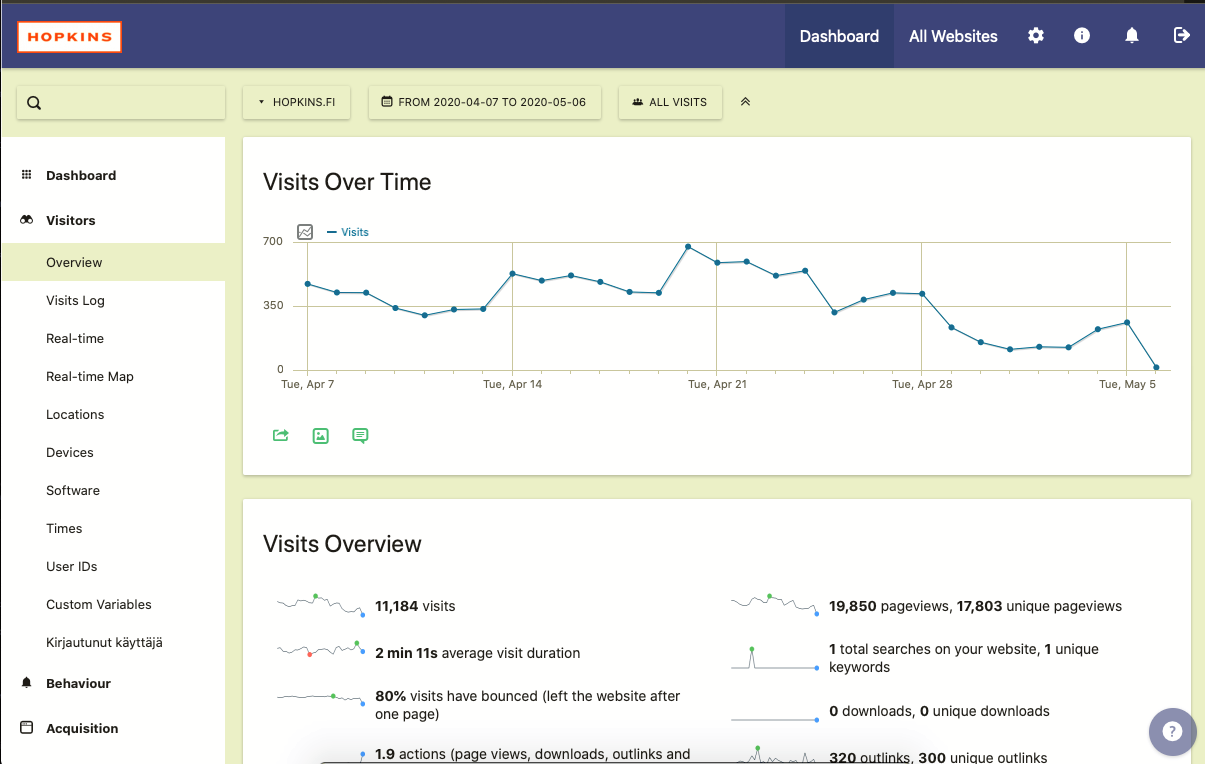
All reports concerning the website audience are under the Visitors menu.
Matomo has long offered the possibility to study individual users with a level of precision that Google Analytics only introduced a year ago. Analysing individual user paths provides a much more varied picture of users and usability than mere upper-level figures.
For every visitor, you will be able to see the time of the visit, the service provider, geographical location and data related to the pages read. In addition, you will see the browser, operating system and device data familiar from Google Analytics.
Matomo’s user reports have one clear deficiency in comparison with similar reports in Google Analytics: Matomo is unable to identify the user’s age, gender, or interests necessary for advertisers.
Actions
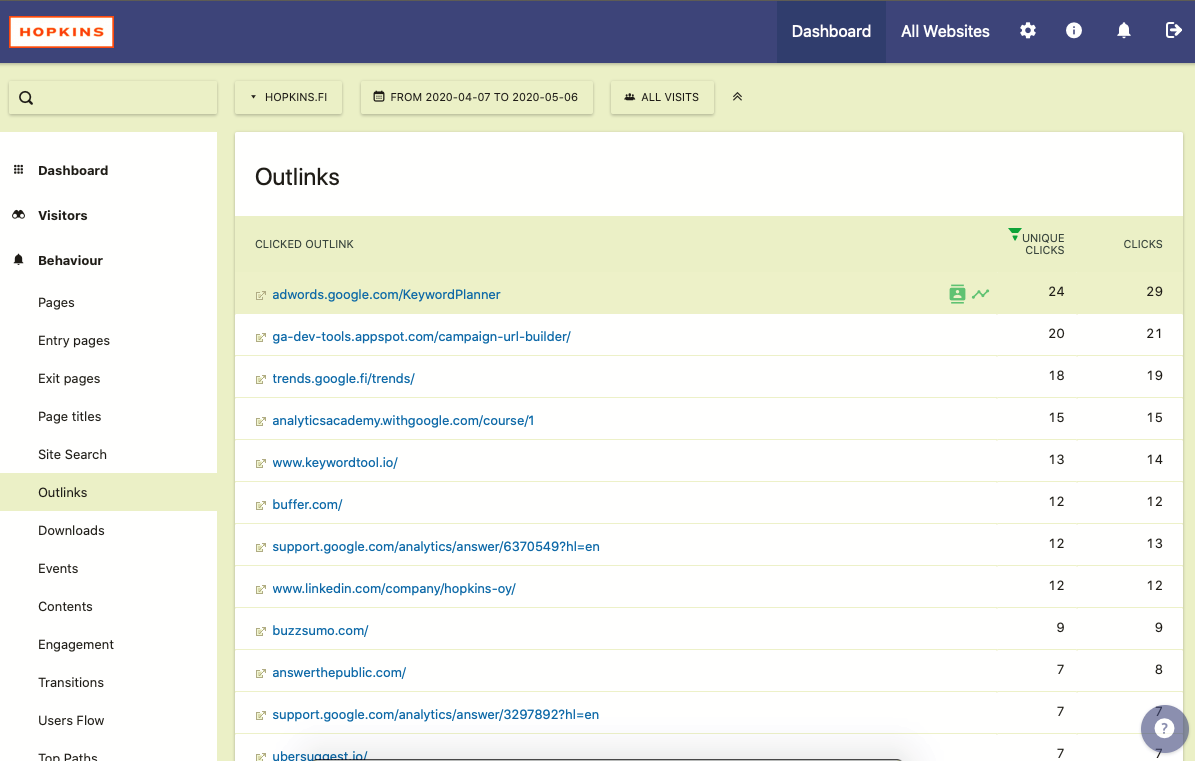
Matomo’s Actions menu corresponds to the Behavior menu in Google Analytics. In Actions, you will find data on the pages read, landing pages, exit pages, use of website search and event tracking. Event tracking in Matomo is similar to that of Google Analytics. In Matomo, events are divided into event categories and event actions, and a name and value can be associated with an event.
Some reports are even more interesting: Matomo tracks clicks to external websites and file downloads as a separate action category. Thus you don’t need to use event tracking for these.
Referers
Traffic sources can be found under the Referers menu. Matomo includes all traffic sources in referers, including those coming through a link, a session acquired through advertising or a visitor referred to the website by a search engine.
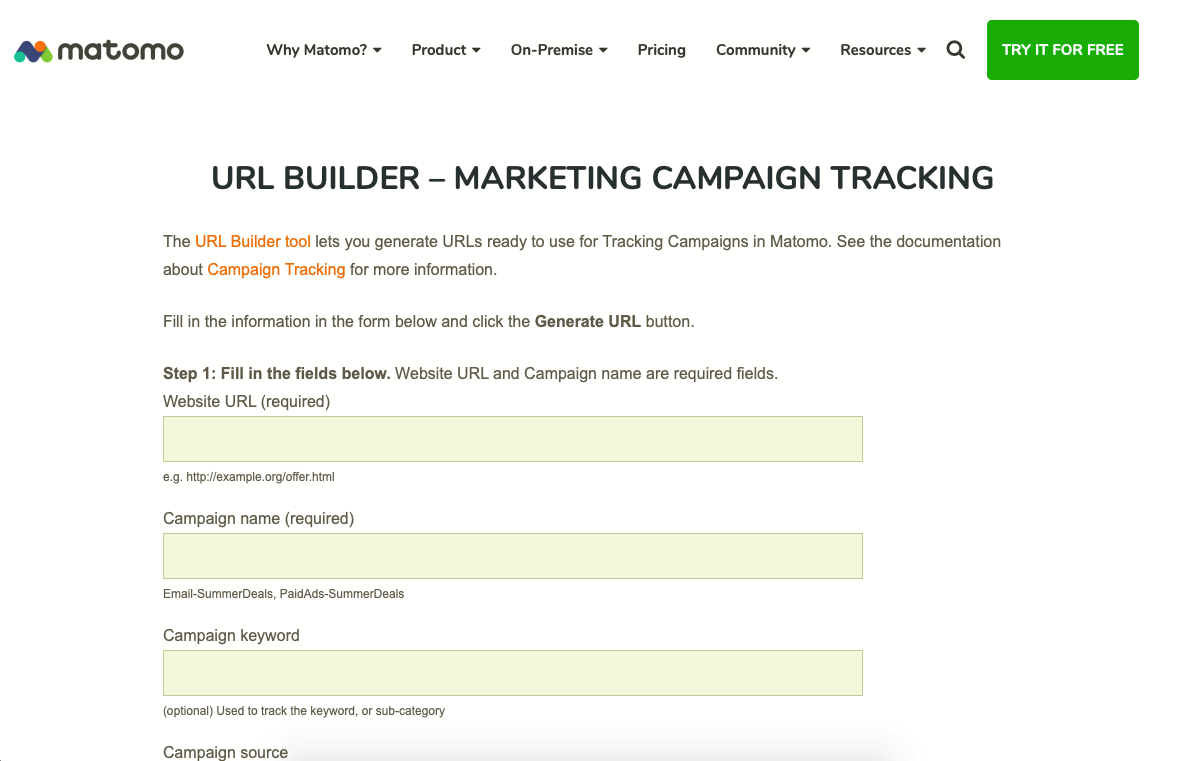
If you want to track users arriving through advertising, you must tag the ads for analytics. For this purpose, Matomo offers a special URL Builder tool for the easy creation of the required links.
Goals
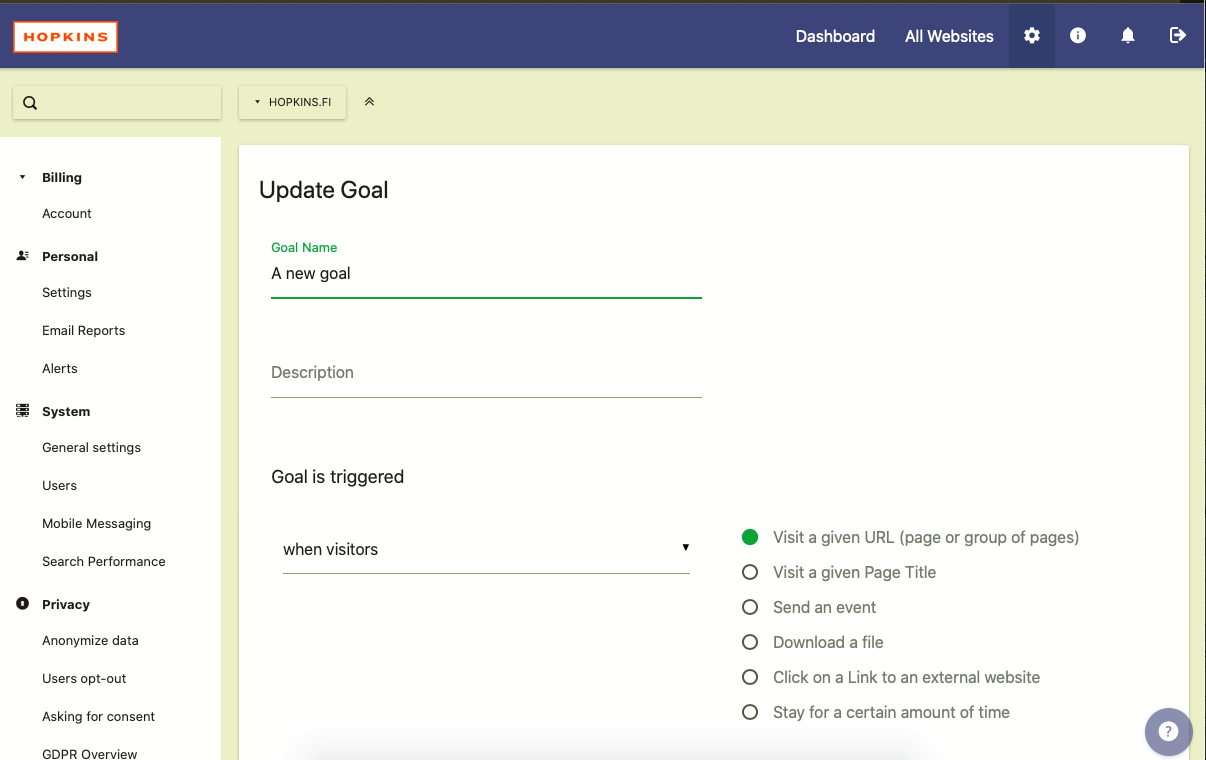
You should of course define goals for each website. The goals are defined very similarly to what you’ve seen in other analytics platforms.
The goal can be a visit to a certain page, a click on a certain outbound link, or a purchase in a web shop.
Can Matomo be used as a digital marketing tool?
Matomo is an excellent web analytics tool for areas such as the public sector, health care or, say, a law firm.
But can Matomo be used as a marketing tool? Yes, subject to a few reservations.
If the analytics requirements are not particularly high, the free version of Matomo will meet them as well as any other analytics software.
What if the basic features are not adequate? Very often, you’ll find the extensions you need in Matomo Marketplace. Some of the extensions are free, some or paid.
If you have access to the services of a skilled php and SQL wizard, only sky is the limit. However, if you want to modify Matomo’s features but do not have the budget or skills required, you should turn to some proprietary alternative (e.g. Google Analytics).
Matomo is particularly suitable as a web analytics tool for the public sector, health care and social welfare sector. It is also an excellent choice for enterprises such as law firms or the financial sector.
Hopkins is a digital marketing and analytics agency from Helsinki. We consult several high traffic Matomo Analytics users in Finland. Contact us for more information about our Matomo Analytics services!

CARE – a digital analytics framework.
Does your organisation struggle to provide a return on investments in digital analytics? Many organisations collect data and report it. Unfortunately, they often fail to derive insights and take action […]

Minimalist approach in analytics – less is more
Most digital marketers and website owners want to get the best out of their analytics. For many, this means tracking as much data as possible. Maximalist approach in analytics I […]

10 digital analytics implementation laws
Ten digital analytics implementation laws, also known as Piippo's laws.
Interested in this topic?
Call us 020 788 8120 or fill out the form below and let's continue the conversation!
